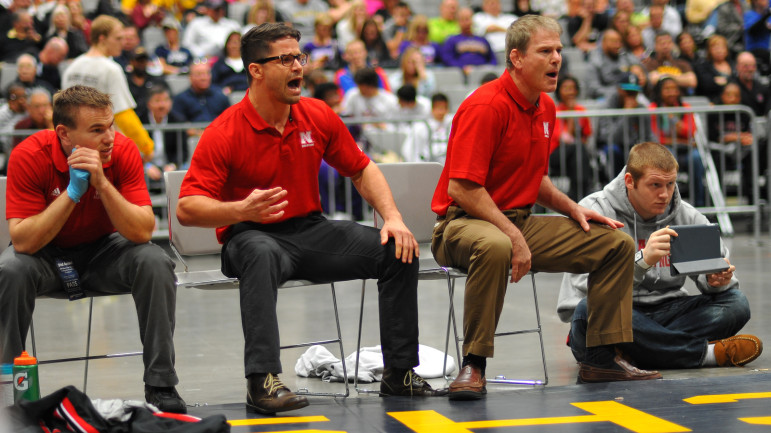

Three Simple Ways To Boost Your Board’s Fundraising Knowledge
 Your nonprofit board of directors can be a dynamic catalyst to bring in new major giving. People who are passionate about what your institution does and have a lifetime of connections. That juxtaposition can be the make or break difference between “basic survival” fundraising or breaking out into the green fields of major gifts fundraising.
Your nonprofit board of directors can be a dynamic catalyst to bring in new major giving. People who are passionate about what your institution does and have a lifetime of connections. That juxtaposition can be the make or break difference between “basic survival” fundraising or breaking out into the green fields of major gifts fundraising.
Yet, as I have chronicled in the past (and you probably know from experience) most boards of directors simply don’t know enough about fundraising or they even fear and avoid it. This void in knowledge and enthusiasm for fundraising is the one devastating factor that can keep an effective and valuable nonprofit small and ineffective. I can’t tell you how many times I have seen articles written by consultants on LinkedIn that detail what is required to be a great board member and few if any list fundraising. Some list giving.
Key to breaking down board fundraising fear or avoidance is to break down the process and show each board member a unique role. It’s also vital to make fundraising essential to all board members. It’s not something “you don’t do.” Most people are avoiding it because they think we are asking them to harass and torture their friends and colleagues. We know fundraising is… yes, asking for money, but also helping to do prospect research, hosting events, making introductions, thanking a new donor, and much more.
Once they understand the wide range of roles in fundraising, I ask Board Members not to tolerate fundraising like a four-year-old kid forced to eat her spinach. I ask them to love fundraising. Powerful fundraising is powerful program. Most board members love your institution’s work, your program — that’s why they are on your board. They should understand that raising a lot more money means more of what they love. Then there you go.
I could go on for pages more, but let’s focus on three moves that are generally feasible and quick to implement.
This isn’t rocket science, it’s simple stuff. No, really. Here are three simple ideas to help your board break the knowledge barrier.
Recruit a Development Officer to Join Your Board
We have all seen accountants, lawyers, and PR professionals asked to join boards to lend their technical experience and know how. Why not fundraisers? I joined a board in this role and I was able to help educate and give strong oversight into the staff’s work. I asked key questions that simply hadn’t been asked before. The board wasn’t full of dummies, it was just the fact that they hadn’t done fundraising for a living. 30+ years’ experience in the field and let’s hope I have learned something! In your community there will be development officers who are donors, who volunteer for your institution. We are active and community-minded people.
You will have to set down some rules around conflict of interest, if needed. Perhaps find a retired development officer? We are everywhere. One hazard in this type of arrangement I want to say out loud is that the board will see that one person as the person “doing fundraising” and ignore being any part of it further. That Balkanization of fundraising is common as too many people find it distasteful and uncomfortable. They are more than happy to tell themselves that it’s “taken care of.” Another benefit is that development officers enjoy having a colleague on the board who understands the challenges and needs of their work.
For most nonprofits, fundraising revenue is a top issue. So why not recruit expertise to give you unbiased counsel on your board?
Teach Your Board the Cycle of Fundraising
This is simple — it’s the five-part cycle that explains the process of raising major giving. It looks different for every donor, but each step is usually there in some shape or form. It is:
a. Identification
b. Qualification
c. Cultivation
d. Solicitation
e. Stewardship
Too many board members think fundraising is simply “asking rich people for money.” It’s the most consistent mistake I have seen over 32 years in the field made by boards and es and executive staff again and again. That we development officers have some magic rolodex and can just call rich people and raise individual major gifts. That we can just write proposals to foundations with no meetings, no research, and just magically funds pour in.
It’s a process. Sure, anyone can point out the self-solicited gift that just came in. I had a client who had a $20,000 gift made online. One board member scoffed that we didn’t’ need prospect research or cultivation. Some people “just get it” and online giving is a lot less expensive, that if the staff “just hustled” they would find all those $20,000 gifts ready to fall like apples from the tree! Turns out the prior development oOfficer had worked on that $20,000 for two years! Identified, cultivated, and finally asked that donor. The donor said yes but in six months, and she kept her word.
If your board understands the full cycle, they can budget better, they can fund the needs and staffing for the cycle of fundraising. Databases, prospect research, events have a better chance of being funded and supported. Also board members can find their personal roles in the cycle. Perhaps a board member just cannot solicit, but would love to play a part in stewardship or cultivation! No, fundraising is NOT twisting your best friends arm till they cry uncle. Sorry. There are many roles in the cycle a board member can play.
Take a Board Member on a Visit
Board members can learn a lot about the professionalism and the preparation that go into these meetings. One can also see how inappropriate it often is to ask a prospect you just met for a gift. Sounds silly? Well, I have heard from countless development officers how their CEO’s want them to solicit every time they meet someone. One colleague of mine at a big Canadian nonprofit simply asked board members to come on visits. She did great prep with each board member, set down their goals, roles etc. Each board member who went on a visit got a lot out of understanding the process. These visits took the fear out of fundraising. Board members learned that fundraising is just like building any relationship. It takes time.So when a new CEO came on board and demanded that this development officer solicit and get “wins” when she was meeting new prospects… the board objected! They had become educated on the process and understood what it took to advance a major gifts relationship.
I know there are many more best practices around teaching your board about fundraising. These are just some that came to mind as common sense and easy to implement. As development officers we can make the mistake thinking that everyone knows about development. Nonprofit board members are volunteers and don’t do this work for a living. Be tolerant of each person’s learning curve. Try to focus on “experiential” learning, as they call it these days. Teach by doing, not a dry PowerPoint if you can at all avoid it. Even when I teach the cycle of fundraising, I teach it as a game. People have to get up and walk around a living cycle of fundraising. It’s funny and silly but much easier to understand and visualize.
The message is simple: fundraising is an essential board responsibility but there is a role for everyone. Fundraising is powerful and wonderful. Few things are more wonderful in the nonprofit world than watching a nonprofit enter the big leagues of fundraising. Seeing good work strengthened, advanced, and expanded with new funding is why we do this work.
 Armando Zumaya is Chief Development Officer at the USS Hornet Museum, a museum ship in Alameda, California. He has over 25 years of experience developing and executing successful fundraising programs for such groups as the American Cancer Society, the Center for Public Integrity, and the San Francisco Opera, and served as National Campaign Director for the University of California at Berkeley.
Armando Zumaya is Chief Development Officer at the USS Hornet Museum, a museum ship in Alameda, California. He has over 25 years of experience developing and executing successful fundraising programs for such groups as the American Cancer Society, the Center for Public Integrity, and the San Francisco Opera, and served as National Campaign Director for the University of California at Berkeley.









